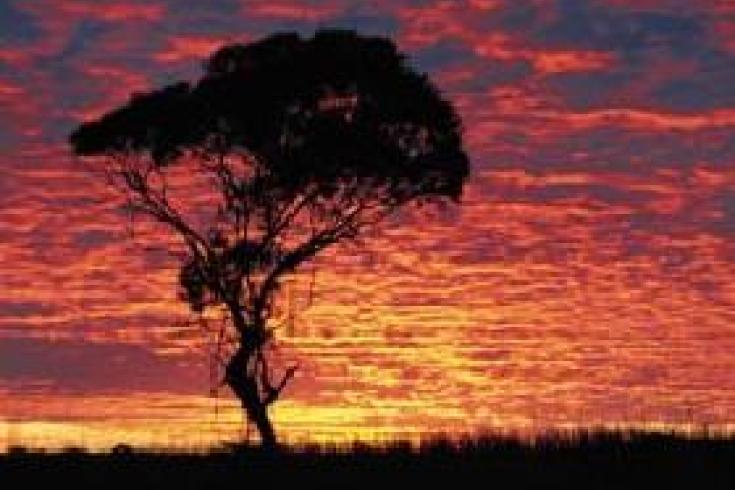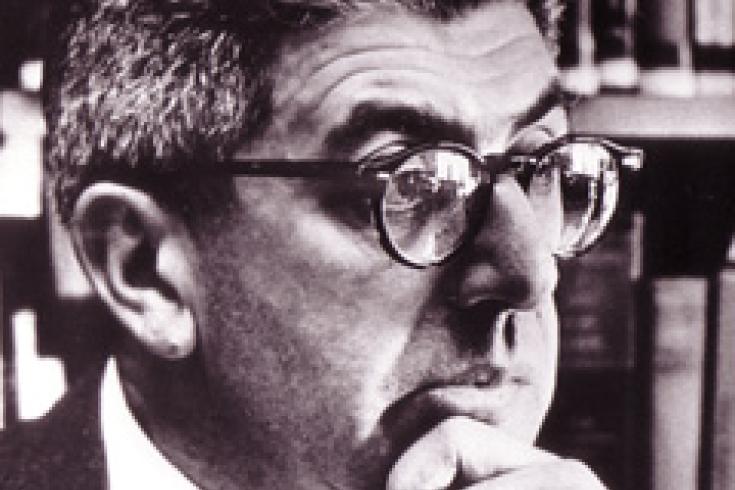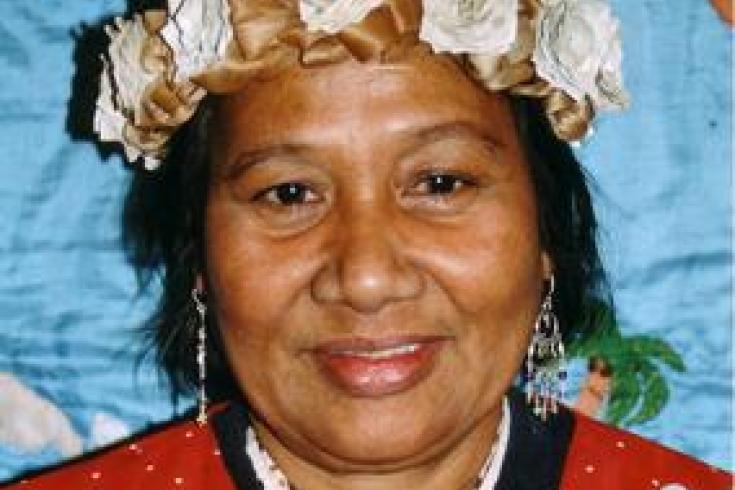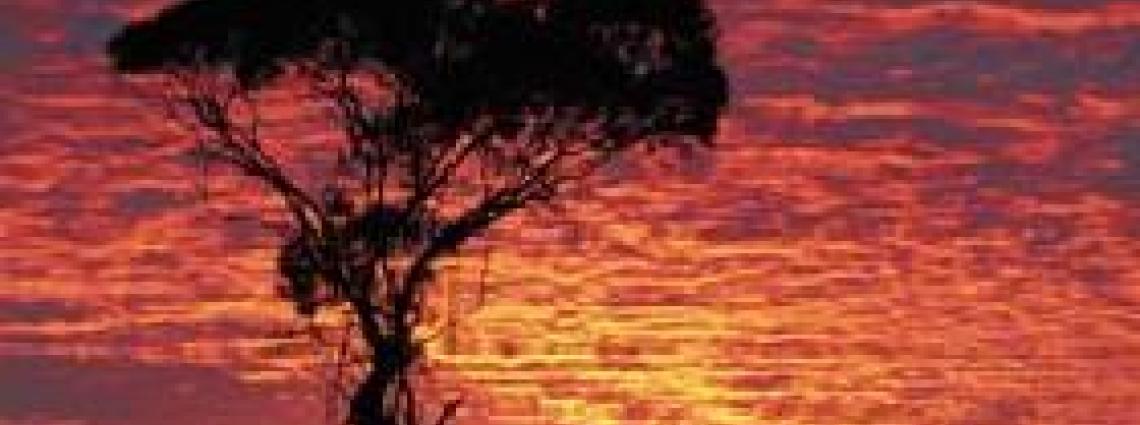Five nuclear test-ban heroes
KUMANARA BRYANT
On 18 June 2012 (Kumanara) Bryant passed away at the age of 67. Bryant was a member of the Spinifex people, an indigenous Australian group whose traditional land is the Great Victoria Desert in Western and South Australia. In the aboriginal culture, Kumanara is a title given after death because traditionally the names of deceased people are neither spoken nor written. It is also taboo to depict the deceased through images. Emu Field in the Great Victoria Desert was chosen as a site for British nuclear tests in 1953, after the first tests were conducted at the Montebello Islands (starting with the ‘Hurricane’ test in 1952) and in South Australia. A total of seven nuclear tests were carried out at the Maralinga nuclear test site. Bryant was the last surviving member of the delegation of aboriginal elders that went to London in 1991 and 1992 to campaign for restitution, redoubling of the decontamination efforts and compensation for the nuclear testing on what the aborigines consider to be their ancestral land; for more information, see website chapter effects of UK nuclear testing. His mission was successful. It achieved the approval by the British government to fund a US$ 97 million rehabilitation project for Maralinga. This made it possible for Bryant and the other Spinifex members to return to their homeland years later, where he lived until his death. As Archie Barton, the Administrator of the Maralinga lands, said in his testimony in 1992: "On my left is [Kumanara] Bryant, he understands English but can’t speak it so much, but it is important that he has been sent here by the community to represent them, giving the delegation the power in our feelings and the strength to carry out what we are on about."

The Great Victoria Desert in Australia
BARRY COMMONER
Barry Commoner passed away on Sunday, 30 September 2012. A founder of modern ecology and the environmental movement that mobilized thousands of Americans and people around the world, Commoner was also one of the pioneers of the public awareness campaign warning of the dangers of nuclear testing. Commoner was part of a generation of scientist-activists who raised the issue of the toxic waste left behind by World War II, and was one of the first to open a public debate on the citizens’ right to be informed about the risks for their health. Commoner joined, and later presided over, the St. Louis Committee for Nuclear Information in 1953. The task of the Committee was to "explain to the public how splitting a few pounds of atoms could turn something as mild as milk into a devastating global poison," as he stated in an interview. The Committee also analyzed the effects of radioactive fallout, which showed an increased concentration of strontium 90 in children’s teeth as a result of atmospheric nuclear testing. This discovery rallied public opinion worldwide and convinced U.S. President John F. Kennedy to support and subsequently negotiate an end to nuclear testing with Soviet leader Nikita Khrushchev. The result was the 1963 Partial Nuclear Test Ban Treaty (PTBT) which banned nuclear testing in the atmosphere, outer space, and under water but not underground. Commoner was also actively involved in drafting a petition signed by thousands of scientists worldwide in support of President Kennedy’s proposal to the U.S. Senate to ratify the PTBT in 1963. According to Commoner, this was "the first of continuing international actions to fully cage the nuclear beast."

LIJON EKNILANG
Lijon Eknilang passed away in August 2012, aged 66. Eknilang was one of 82 Rongelap Islanders affected by the radioactive fallout from the 1954 Castle Bravo nuclear test. She was eight years old at the time of the test.
With 15 megatons, Castle Bravo was the largest-ever U.S. nuclear test and one of 67 conducted on the Marshall Islands between 1946 and 1958; for more information, see chapter effects of U.S. nuclear testing.
In 1985, Eknilang was among those who led the ‘exodus’ of her people from Rongelap to Mejatto Island in Kwajalein Atoll onboard the ‘Rainbow Warrior’ just a few weeks before it was sunk in the port of Auckland, New Zealand.
Eknilangspent most of her life as an advocate for the Rongelap nuclear test survivors. She spoke at conferences and at the U.S. congress and travelled to Japan, the Pacific region and Europe to raise awareness about the health hazards associated with nuclear testing: "People were getting sick and frequently being sent off for medical treatment," she said, "We were worried for the safety of our children." Eknilanghas been named an "Icon in the Marshall Islands for her international advocacy on behalf of nuclear test victims."

SPURGEON M. KEENY, JR.
Spurgeon Keeny Jr. passed away on August 10, aged 87. A physicist by training who also specialized in Soviet studies, Spurgeon embarked on a long and successful career in government as well as in academia.
From the Truman to the Carter administrations, Keeny was involved in the negotiations of treaties such as the nuclear test-ban, the Nuclear Non-Proliferation Treaty (NPT) as well as the Strategic Arms Limitation Treaties (SALT) and the Strategic Arms Reduction Treaties (START).
In 1958, after being on the advisory board that encouraged President Eisenhower to move forward on a nuclear test ban, Spurgeon joined the U.S. delegation to the negotiations in Geneva. From 1977 Keeny served as deputy director of the Arms Control and Disarmament Agency (ACDA), where he was actively involved in interagency decisions regarding nuclear-test-ban negotiations and the SALT II negotiations.
Keeny became President and Executive Director of the Arms Control Association in 1985 and remained in this position until his retirement in 2001. During that time he was actively engaged in arms control and disarmament affairs, in particular with the CTBT of which he was a great advocate through his many writings, lectures and congressional testimonies.
Keeny also served on the National Academy of Sciences Committee on International Security and Arms Control, contributing to several of its reports, including the 2002 report on Technical Issues Related to the CTBT.

PETER MARSHALL
Peter Marshall passed away on Friday, 5 October 2012. His work on detecting nuclear explosions through seismic technology spanned half a century, during which time he published over 100 related scientific papers.
From 1975 to 1988, Marshall was the UK representative in the Group of Scientific Experts, mandated by the Conference on Disarmament to study technical aspects of monitoring for nuclear explosions since the early 1970s. He was then a technical advisor to the UK delegation at the trilateral test ban negotiations between the United States, the Soviet Union and United Kingdom from 1977 to 1980.
Marshall was heavily involved in the CTBT negotiations between 1994 and 1996 at the Conference on Disarmament at the UN in Geneva, where he chaired the Scientific Expert Group responsible for designing the International Monitoring System. He later held the post of head of the CTBT Monitoring Unit in the UK Ministry of Defence.
In an article written for the very first edition of Spectrum, Marshall states that the CTBT was the most significant step since the signing of the Nuclear Non-Proliferation Treaty (NPT): "With a verifiable CTBT in force the nuclear non-proliferation objectives of much of the international community will be significantly strengthened. All States Parties are provided with a reduced threat to their national security thus making the world a safer place for humankind."
Marshall received two honours from Her Majesty the Queen for his services: he was made an Officer of the Order of the British Empire (OBE) in 1990, and a Companion of the Most Distinguished Order of St Michael and St George (CMG) in 2002.
22 Oct 2012
